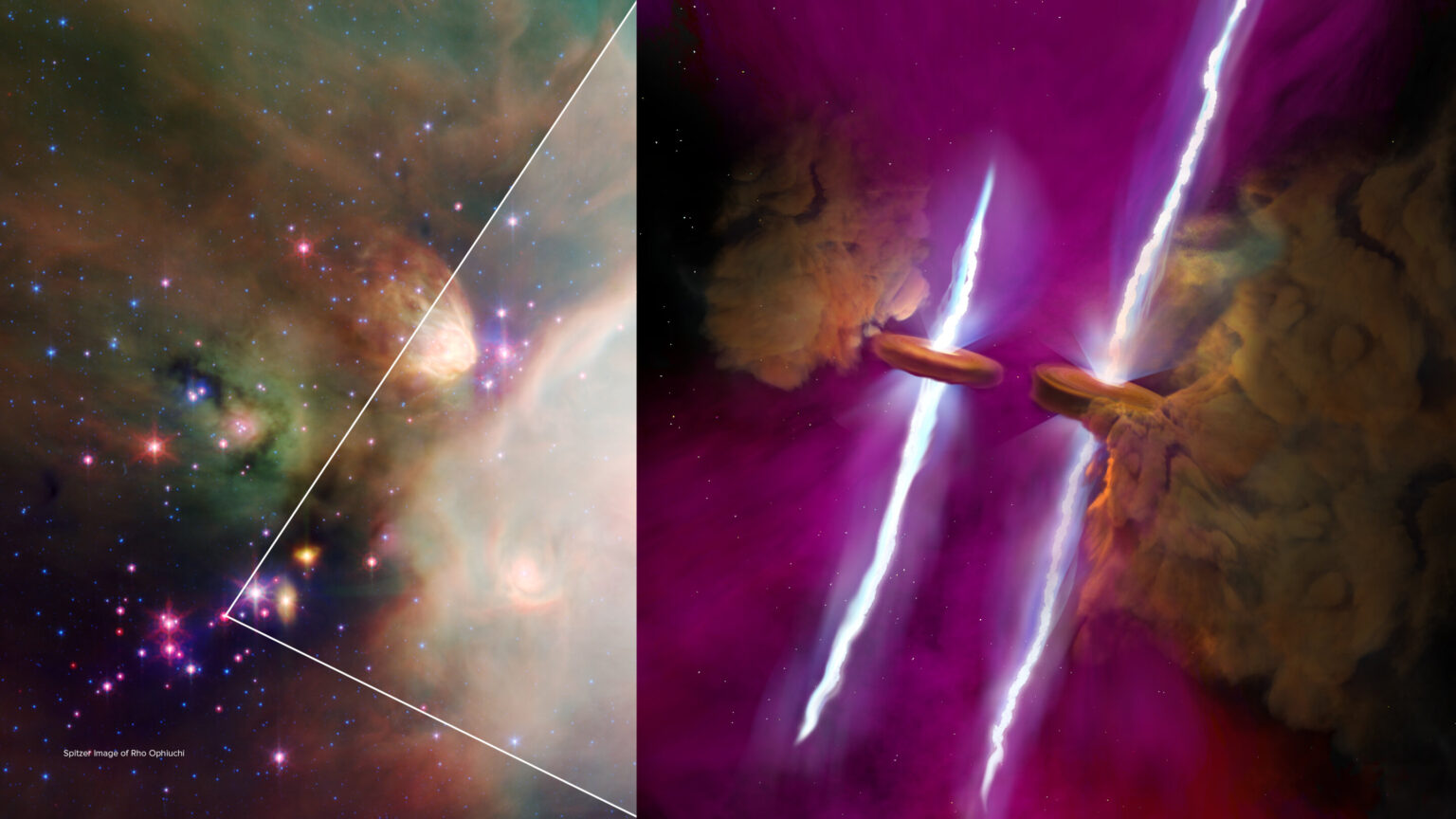The ALMA radio antenna array and the James Webb Space Telescope have helped scientists discover a surprising structure in the WL20 binary system. It is a pair of gas-dust disks oriented in the same plane.

Unexpected discovery by astronomers
Most of the universe is invisible to the human eye. The matter from which stars subsequently form can only be seen in wavelengths that are outside the visible spectrum. Recently, astronomers using two very different and very powerful telescopes discovered binary disks and parallel jets erupting from young stars in multiple star systems.
This discovery was unexpected and unprecedented given the age, size, and chemical composition of stars, disks, and jets. Their location in a known, well-studied part of the universe adds some excitement.
For this study, observations from the U.S. National Science Foundation’s (NSF) National Radio Astronomy Observatory’s (NRAO) Atacama Large Millimeter/submillimeter Array (ALMA) and NASA’s James Webb Space Telescope’s (JWST) Mid-Infrared Instrument (MIRI) were combined.
Parallel disks
ALMA and MIRI from JWST observe very different parts of the electromagnetic spectrum. Their combined use allowed astronomers to detect these radio- and infrared-hidden twins in the star system WL20, located in the neighboring Rho Ophiuchi molecular cloud complex, which is more than 400 light-years away from Earth’s Solar System.
“What we discovered was absolutely wild,” shares astronomer Mary Barsony, “We’ve known about star system WL20 for a long time. But what caught our attention is that one of the stars in the system appeared much younger than the rest. Using MIRI and ALMA together, we actually saw that this ONE star was TWO stars right next to each other. Each of these stars was surrounded by a disk, and each disk was emitting jets parallel to the other.”
ALMA detected disks and MIRI detected jets. Co-author Valentin J.M. Le Gouellec of NASA-ARC found and reduced archival ALMA data to reveal the composition of the disks, and Lukasz Tychoniec of Leiden Observatory provided high-resolution images showing their massiveness. It turned out that their size was about 100 times the distance between the Earth and the Sun. Another co-author,Martijn L. van Gelder, provided resources to process the data collected by MIRI, which revealed the chemical composition of the jets.
According to phys.org


